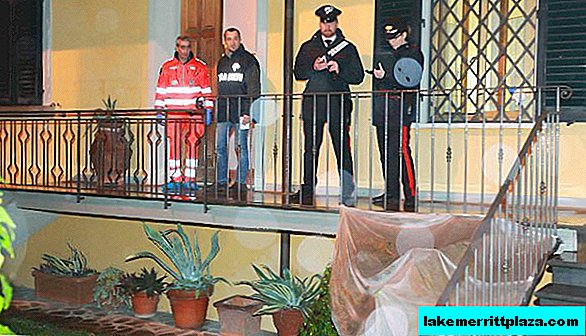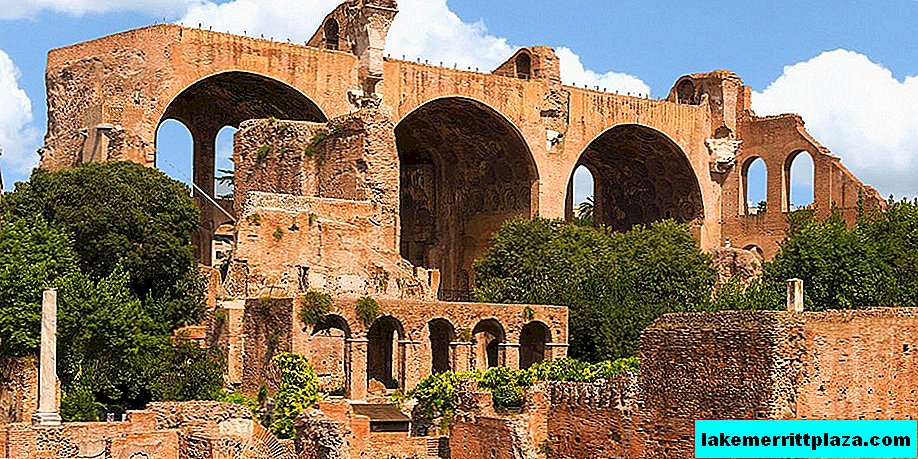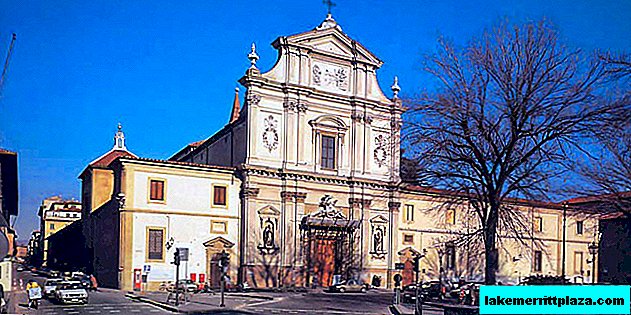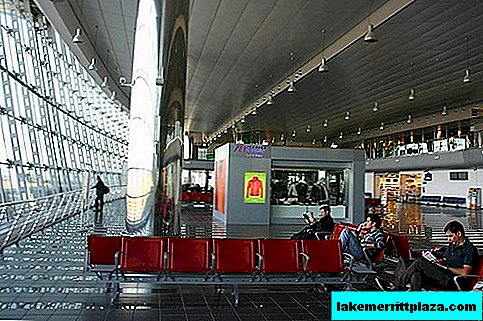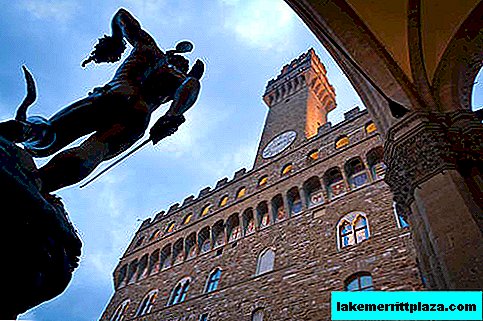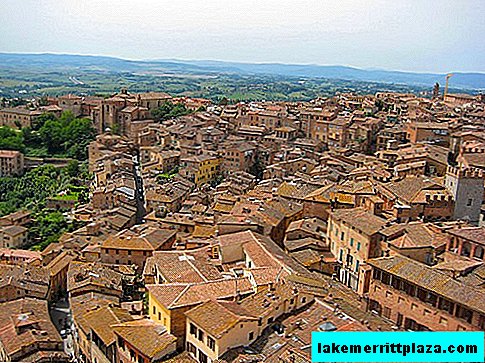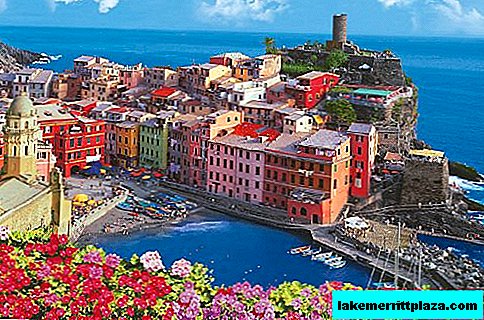Ischia is an island of volcanic origin in the Tyrrhenian Sea on the west coast of Italy, in the northern part of the Gulf of Naples. Ischia is part of the Campania region. The area of the island is 46.3 km2, the population is 62,000 people. Ischia is located 40 km from Naples, it is the largest island in the bay.
Along with the island of Capri, located 30 kilometers away, it is one of the most fashionable and beautiful Italian islands for relaxation. On the island there are three extinct volcanoes: Epomeo (height 789 m the highest point of the island), Trobotti and Monte Vezzi. The last eruption occurred in 1301.
- While relaxing on Ischia, we recommend visiting excursions in Naples
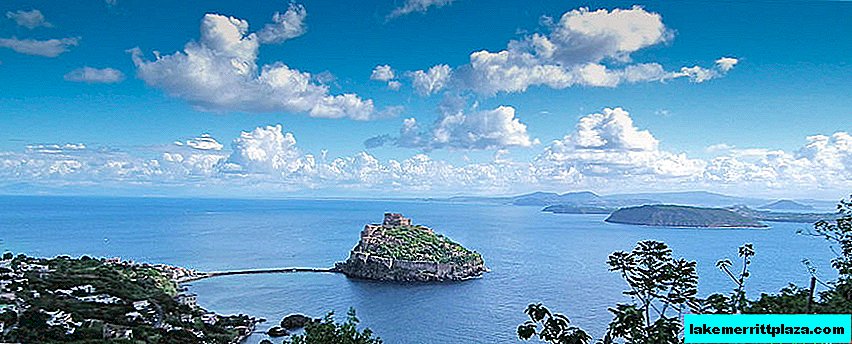
In ancient Rome, Ischia was already a popular resort. This place is called the island of youth and beauty because of the thermal springs, the healing properties of which are widely used in SPA centers. The climate on the island is typically Mediterranean, with the largest number of sunny days per year on the coast of the Tyrrhenian Sea. The average winter temperature does not fall below + 15C. Thermal springs hit constantly, so they come to rest on the island at any time of the year.
Compare Ischia Island Accommodation Rates
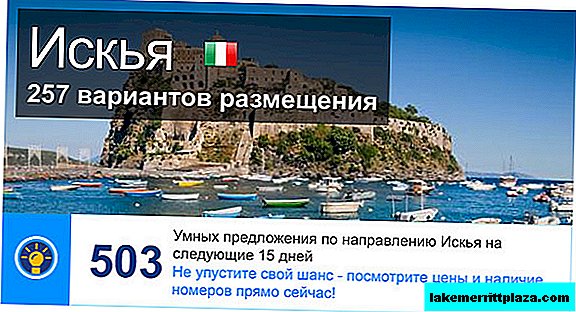
History of Ischia
In ancient mythology, there is a legend about the origin of the island. During the battle with the Giants, Jupiter threw a huge piece of rock at Typhon.
The goddess Venus changed the direction of the flight of the cliff, which fell into the waters of the bay. So there was an island that replenished the collection of islands of Venus - lovers of beautiful places.
The goddess greened the island and inhabited it with animals. But the vengeful Typhon did not leave the island alone and his anger spilled out through volcanic eruptions and earthquakes. Basically, the giant is in a state of sleep, and its breath finds its way out through underwater craters in the form of thermal springs.
The first settlements on Ischia were founded by the Greeks in the 8th century BC. The Greeks used the island as a watch post in the Mediterranean. Later, in the Roman period, villas of nobles and wealthy citizens were built on Ischia. From the 16th century, rich people from Western Europe began to come to the island for treatment at thermal springs, at which time tourism was born on the island. Today, there are five main resort centers in Ischia, on the territory of which there are more than 300 various hotels and mini-hotels.
The average price for a double room per day ranges from 150-500 euros, and the cost of a room with sea views in a chic five-star hotelL'Albergo Della Regina Isabella on the coast of Lacco Ameno in the season can safely approach 1000 euros.
But economical tourists find special offers in hotels where the daily price for a room can be approximately 35-40 euros. We recommend our readers to independently find an acceptable option on Booking.com or use the search for cheap hotels on Hotellook.ru
Getting to the island should not be any problem. A ferry regularly runs from the port of Naples, which takes passengers to Ischia in 1.5 hours; you can also sail by boat in 60 minutes and for 20 euros. Current prices and timetables can be found on the official website of the carrier company www.alilauro.it
Watch my detailed video instruction on how we got from Rome to Ischia:
And also a beautiful video about the road from the port to the hotel:
Buses are well organized in Ischia. Ticket price is 1 euro. The ticket is valid for 90 minutes and must be composted. You can purchase season tickets for 1, 2 days and for a week. Penalty for stowaways - 50 euros. There are two bus routes in Ischia that circle the island in a circle. The island consists of six communes, autonomous administrative-territorial units: Ischia, Forio, Casamicciola, Lacco Ameno, Serrara Fontana and Barano.
Traveling around the island on a rented car is unlikely to be convenient and rational, since it is quite small. But to go for a few days on an independent trip from the port of Naples, to which you can sail by boat in 60 minutes - this is quite an interesting option. The cost of renting a car with all insurances is about 70 euros per day. To find the most profitable option, we recommend using the search auto.italy4.me for all rental companies.
Cities and attractions of Ischia
The municipality of Ischia is the oldest part of the island and its capital. By law, a settlement is called a city. The city consists of two parts, Ischia Ponte and Ischia Porto, with 17,700 inhabitants. Here are concentrated a lot of hotels, nightclubs, commercial centers, taverns and restaurants. In Kartaroman Bay, along the coast, there are natural baths in which thermal springs beat. Ischia Ponte got its name from the word "bridge". A 220-meter stone bridge was built in the 15th century and connected Ischia Island with a small island on which Ischia's most popular attraction, the Aragonese Castle (Castello Aragonese), is located.
Aragon castle

The first fortress on the islet was erected by the Greek Gerone in 474 BC, when the Greeks fought with the Tyrrhenes. Later, the island often passed from hand to hand and the appearance of the fortress changed depending on what kind of people dominated the island. In 1441, the fortress was restored, strengthened and enlarged to the size of the castle of Alfonso d'Aragon. In this stronghold in the 15th century were the Prince with the garrison, the Bishop with the Capitulum, the Abbey of the Basilians of Greece, the Monastery of Clarisse, 13 churches with 7 parishes and 1892 families residing.
And during the pirate raids behind the powerful walls of the castle, the entire population of the island was hiding. In the middle of the XVIII century, pirate raids ceased, and the population moved to more comfortable places.
In 1823, the king of Naples turned the castle into a prison, and since 1851, the island has become a prison for political criminals. Currently, the castle, covering an area of 56,000 square meters, is a private property, which is open for tourists to visit. Tourists can get to the fortress along the trail or with a modern elevator. The castle houses a museum of weapons - a collection of weapons and torture tools of the XIV-XVII centuries.
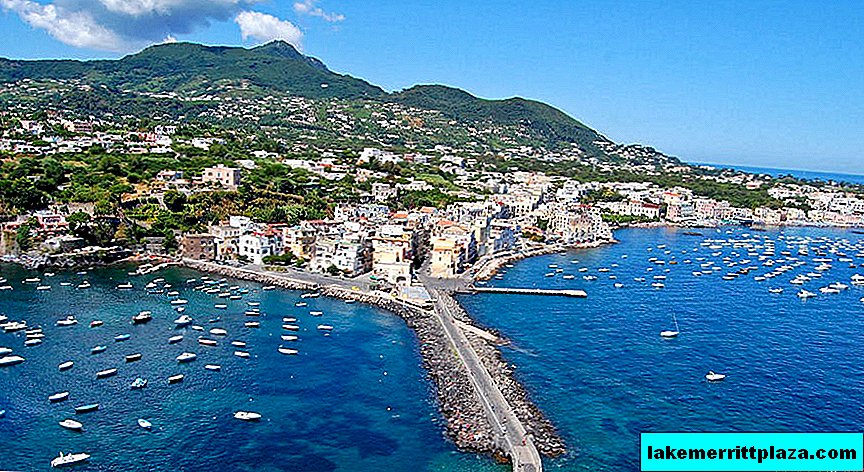
Commune Forio located in the western part of the island. The largest commune. The population is 13,000 inhabitants. Forio is widely known for its thermal resources. Here is the thermal park "Gardens of Poseidon". The Gardens of Poseidon is a UNESCO protected property located in Chitara Bay.
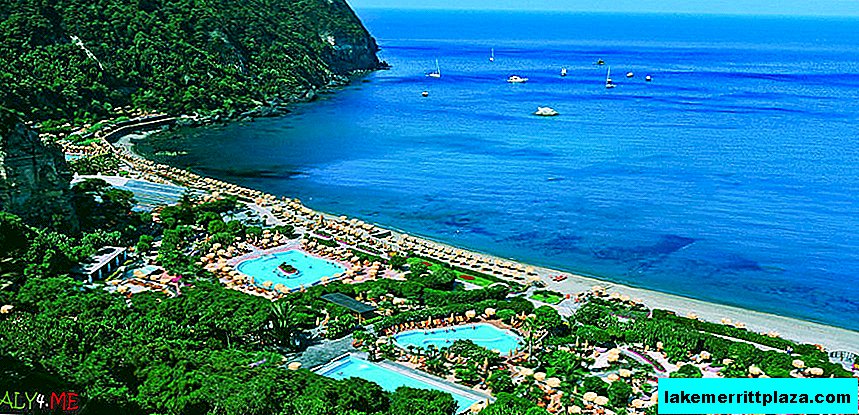
On the territory of the gardens from April 1 to October 31, 22 pools with unique chemical composition of constantly updated water are presented for visitors, the temperature of which ranges from 21 to 42 degrees.
There is also a large Olympic swimming pool filled with sea water. A little higher than the cascade of pools among olive trees is a natural grotto with a Roman sauna on a natural hyperthermal spring. Separately, it is worth mentioning the "Japanese bath", which is made in the form of an oval made of stone with volcano Vesuvius. The bottom of the bath is lined with large gravel.
The bath is divided into two parts, in which the water has a temperature of 15 and 40 degrees, respectively. In this temperature regime, thermal shocks occur that have a beneficial effect on the body.
The cost of the entrance ticket for an examination is 5 euros (children under 3 years old are free), a full-day ticket costs 32 euros (in August 35 euros), a half-day ticket - 23 euros (in August 25 euros). Children 3-12 years old are paid 50% of the cost. When buying a subscription for several days, the ticket price is not significant, but decreases to 29 euros per day. The official term website www.giardiniposeidonterme.com with current prices works only in Italian (as of April 2014).
In Forio it is worth visiting the La Mortella Gardens - a garden created in the place where the lava flow once flowed. Here are collected exotic plants from all over the world. Tropical birds flutter above the tea house. The idea of creating a garden belongs to William and Suzanne Volton, and the project was brought to life by designer Russell Page. The Botanical Garden is open for visitors 4 days a week from the beginning of April to the end of November.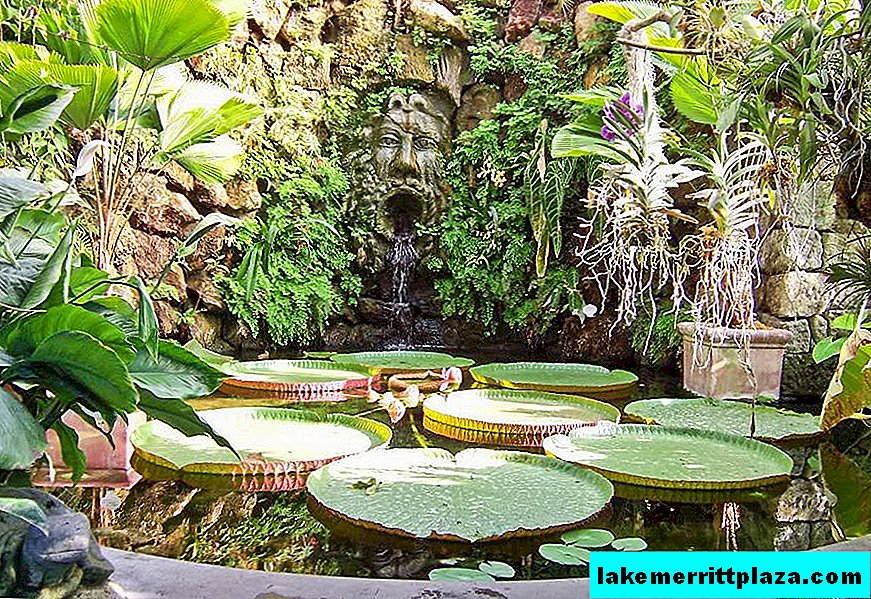
Commune Casamicciola located in the north of the island near the crater of the extinct volcano Rotaro, the population - 7140 people. The Thermal Park "Gardens of Castilene" is open to visitors. Also in this municipality are springs with hot mineral water. This is a green region where the summer months are the coolest.
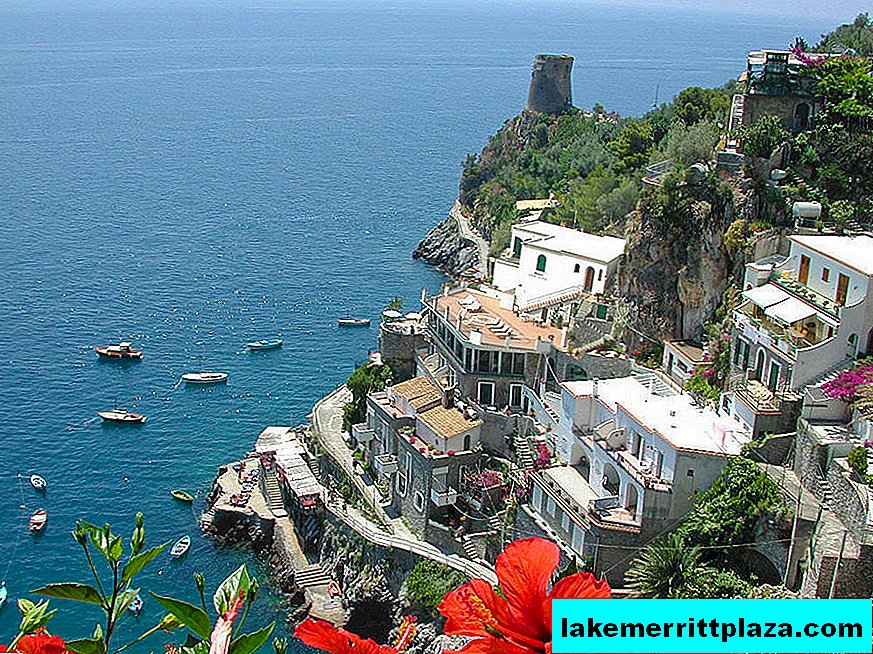
Commune Lacco Ameno - the smallest, 3055 people live here. It is located in the north-eastern part of the island at the foot of the volcano Epomeo. From the promenade you can watch one of Ischia’s symbols - Fungo, a mushroom-shaped rock.
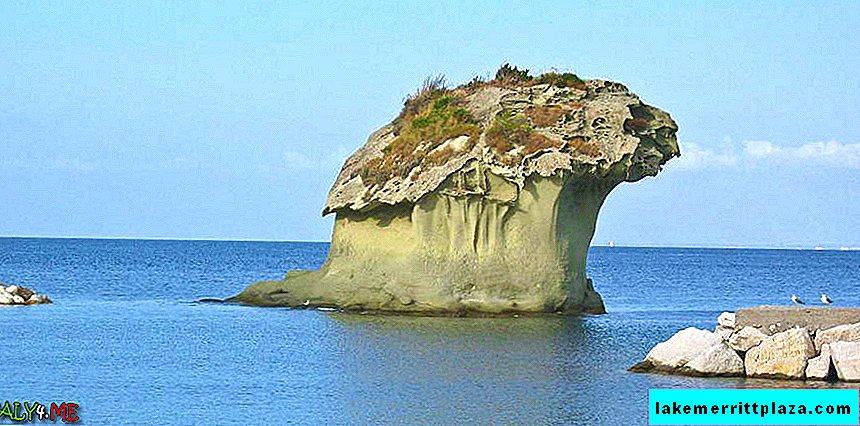
Tuff rock is a unique work of nature. Also Lacco Ameno is famous for the archaeological museum and the thermal park "Negombo Gardens".
Commune Serrara Fontana located in the southern part of the island, population - 3000 inhabitants. This is the most prestigious place on the island. Here the most expensive hotels, rooms in most of which, despite the price, are booked for many months in advance and there are no noisy discos and commercial centers. For lovers of water treatments, there are thermal parks "Aphrodite-Apollon" and "Tropical".
Near the beach, small fishermen's houses painted in pastel colors have been preserved. This area is very beautiful panoramas, since almost the entire territory is above 300 m above sea level.

Commune Barano occupies the south-eastern slope of the island, the population of 8150 people. Here it is the best beach of the island - Maronti. It is worth visiting the Nitrodi Spring to take a healing shower and drink water recommended for the prevention of skin diseases. For lovers of Christian architecture are open: Church of St. Sebastian the Martyr, the Church of the Virgin Mary, the Church of John the Baptist and other objects.
Traditional cuisine on the island of Ischia
Island cuisine very closely related to Neapolitan cuisine and the cuisine of the Campania region.  However, Ischia is famous for its traditional dishes. The most popular is the Iskitan rabbit (“coniglio all'ischitana”), which takes first place on Sunday dinners. Rabbits are bred on the island in earthen pits and fed exclusively with grass.
However, Ischia is famous for its traditional dishes. The most popular is the Iskitan rabbit (“coniglio all'ischitana”), which takes first place on Sunday dinners. Rabbits are bred on the island in earthen pits and fed exclusively with grass.
Of the drinks here, as well as throughout Campania, the most popular lemon liqueur is limoncello.
Holidays on the island
It is worth mentioning the traditional Iskitan holidays.
Running of the holy angel. On Easter Sunday, a statue of the angel Gabriel is brought out of the church to announce the news of the resurrection of Jesus. The angel is brought three times to the mother of God, and he rings the bells with the good news. For the third time, a funeral veil falls from the face of Mary.
Feast of St. Anne. Many years ago, the church of St. Anne stood on the shore of Cartaromana Bay. Every year on July 26, fishermen sailed here on boats and performed ceremonies in honor of St. Anne, the patroness of pregnant women, after the ceremonies picnics and celebrations were held. Since the 30s of the last century, tradition has resumed; on July 26, competitions are held between boats decorated with flowers. This beautiful holiday attracts thousands of tourists from all over the world to the island.
Where to stay
Watch a video review of our favorite Ischia hotel:

